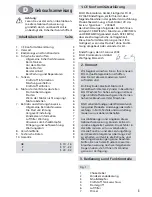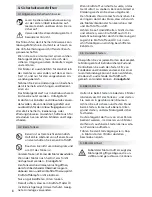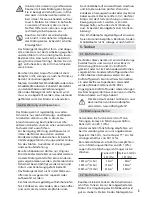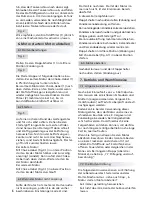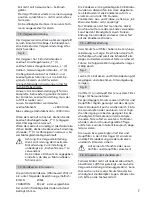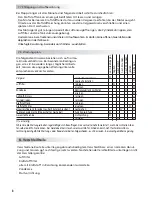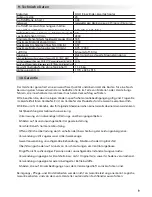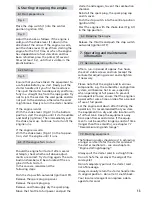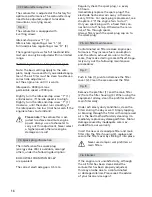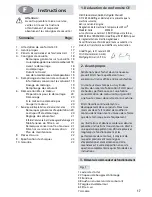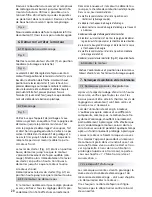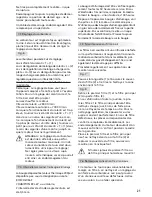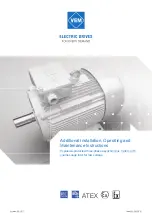
13
6. Starting/ stopping the engine
6.1 Start preparations
Fig. 3
Place the stop switch (1) into the central
position (ignition ON).
Fig. 4
Adjust the choke as follows: If the engine is
cold, push the choke lever (1) down in the
direction of the arrow. If the engine is warm,
pull the choke lever (1) up. When starting the
engine for the first time, or when the engine
has stopped due to fuel starvation and has
been refuelled, press the primer (2) several
times (at least 5 x), until fuel is visible in the
plastic balloon.
6.2 Starting
Fig. 5
Ensure that you have taken the equipment to
a safe place before you start. Slowly pull the
starter handle until you first feel resistance.
Then pull the starter handle quickly and force-
fully in a straight line from the rope guide. Try
not to jam the cord on the cord guide and do
not pull to the end-stop, otherwise the cord
might break. Slowly return the starter handle.
If the engine is cold:
With the choke lever (Fig 4.1) in the bottom
position, start the engine until it starts audible
and briefly (ignition). Then immediately pull
the choke lever up. Continue to start until the
engine runs.
If the engine is warm:
With the choke lever (Fig 4.1) in the top posi-
tion, start the engine until it runs.
starter handle again, to vent the combustion
chamber.
Reinstall the spark plug, the spark plug cap
and its cover.
Push the stop switch into the central position
(ignition ON).
Start the engine with the choke lever (Fig 4.1)
in the top position.
6.4 Stopping the engine
Release the throttle and push the stop switch
outwards (ignition OFF).
7. Operating and maintenance
information
7.1 General operating information
After a run-in period of approx. five hours,
check all visible screws and nuts (except the
carburetter adjusting screws) and retighten,
if necessary.
Please note that the engine and its various
components, e.g. the carburetter and ignition
system, will become hot in use, especially
when operating at full power. To prevent
consequential losses, ensure that the engine is
operated for some time on idle after a period
of use at full power.
Let the engine cool down after finishing the
operation. It is recommended that you store
the equipment in a dry and safe location with
a full fuel tank. Keep the equipment away
from open flames and similar. If the equip-
ment is not be used for longer periods of time
(longer than three months), see chapter 7.7
“Decommissioning and storage”.
6.3
If the engine fails to start
Should the engine fail to start after several
attempts, check whether all above adjust-
ments are correct. Try starting again. The com-
bustion chamber will be saturated if the en-
gine still fails to start.
In this case we recommend the
following steps:
Push the stop switch outwards (ignition OFF).
Remove the spark plug cap cover.
Remove the spark plug cap.
Remove and thoroughly dry the spark plug.
Move the throttle to full power and pull the
7.2 Starting equipment
The following notes should assist in achieving
a longer service life for the starter cord and
the starter mechanism - see also chapter 6.
“Engine starting/stopping”:
Always pull the starter cord in a straight line.
Do not chafe the cord over the edge of the
cord eyelet.
Do not completely pull out the starter cord -
risk of breakage.
Always manually return the starter handle into
its original position - do not let it snatch back.
Your local service agent can replace a dam-
aged starter cord.



